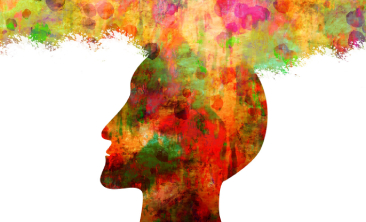
How Do Stories Shape Reality?
How Do Stories Shape Reality? https://www.visualstorytell.com/wp-content/uploads/2020/01/how_do_stories_shape_reality_thumb.jpg 366 222 Shlomi Ron Shlomi Ron https://secure.gravatar.com/avatar/995c0cf093380b90c7704fda398c9addf4e5c605afbc92af5c3f01f67d65aa41?s=96&d=mm&r=g
Unlike narrow-focused business podcasts, I am a great believer that in this day and age, it’s important to talk to not only people in your industry but to people outside your industry to get fresh perspectives.
This is where true innovation comes from and this is my programming strategy for the Visual Storytelling Today podcast.
That’s why on my recent podcast episodes, I was super excited to chat with Natalie Kusturic, a Licensed Marriage And Family Therapist to discuss How do Stories Shape Reality?
In case you’re wondering what therapy has got to do with visual storytelling? Well…a lot!
We talked about the incredible parallels between how visual storytellers rewrite stories of their customers to drive product sales and enhance brand narratives, whereas therapists rewrite painful stories their clients tell themselves in order to achieve self-awareness and joy.
Rewriting brand identity vs. personal identity.
What I found fascinating is that this story rewriting has the power to impact how people perceive their realities. Either as a therapist or a marketer, you need to research your audience to find the root cause of a burning pain point and tranform its meaning in their story – from negative to positive.
Changing narrative meanings is like having your customers wear a new pair of glasses through which they can perceive their realities under whole new light. With such unlikely common ground, I figured this could be quite inspiring and educational conversation we could all learn from.
What you will learn?
– How does a therapist’s end-to-end story-rewriting process work?
– What is the visual storytelling strategy a therapist takes to change the story’s meanings or resolution from negative to positive? What are the mental and physical cues?
– In marriage therapy, there are naturally two conflicting stories that create a gap where a negative reality is born. How does a therapist meld distinct stories from “my story” to “our story”?
– A few success stories to illustrate the rewriting process.
– Top 3 tips marketers could take to improve their reality and their customers’.
And much more!
Watch the full video recording of this interview:
On the road?
You can also listen to the audio podcast of this episode.
Subscribe to the Visual Storytelling Today podcast on iTunes or Google Podcasts
Here are select highlights from our chat:
SR: We talked about the amazing parallels between what marketers and therapists do. Can you describe how does the end-to-end process work? Is it considered Narrative Therapy?
NK: From my perspective all therapy is narrative therapy. As a modality narrative therapy is a specific process of helping someone rewrite their story. Yes, part of the work I do is based in narrative therapy. The client is the expert and I am their partner in self-discovery. First, we gather a history. This is the original story a client has been telling and is well rehearsed in the form of habitual ways of thinking, feeling and behaving. We begin by honoring the story and the person who lived the story. Through honoring the person and the story we begin to rewrite the story. The main character has strength, courage, intelligence and skills to survive the journey so far. From there we begin to shift the perspective on this character, YOU. As we move through the story the character begins to take on new skills which are reinforced in their day to day world. This can come in the form of practicing one thought better when they feel themselves slipping into negative self-talk. It can be reinforced with visual and verbal cues as well. For instance, if a person does not feel like people like them then they practice listening for kind and positive words. If part of the story is I can’t do something then the practice is noticing and seeing all the things they are capable of doing. It sounds simple but it’s often hard for people to see the good in themselves.
SR: What is the most common roadblock your clients need your help with?
NK: Each person who walks through my door has a pain point they struggle to get past which impedes their progress. If I were to strip it all away to its bones my clients come in because they lost their voice in their life and merged with the storyline of others to survive or get needs met. Yet you can’t run away from the inner dialogue that wants to be expressed. Therapy is a path to reclaim your voice and begin narrating your own life again.
SR: I bet it takes time to rewrite a story that is hard-coded in your client’s mind for a long time, what is your visual storytelling strategy to change the story’s meanings or resolution from negative to positive? What are the mental and physical reminders you use?
NK: One thing which helps a resistant person to shift is when the focus is shifted from themselves to others. Often they can attribute more positive qualities to others. When they can see the good in others then we can talk about the good within them and find proof of ways they have been good so they can begin to form a real positive image of themselves.
SR: Is there a particular visual analogy you use to resonate with your clients to get them to that aha moment in their treatment that change their reality?
NK: I often use the analogy that life is like a video game. Each time you learn the skills to get through one level you move up and into a new reality. Even when you are on the same level with others playing if you do certain tasks right you get access to special abilities which can help move you further up into the game. So while you are sharing the same field together your reality can be different than the other players.
A bit about Natalie.
Psychotherapy, for me, is the creative practice of guiding others to remember who they are before past trauma convinces them otherwise. The study of psychology, and wellness in general, has been a very personal journey. I spent years quietly observing myself and others, eager to understand the source and manifestations of joys, pains, perceived limits, and motivations. By the age of 15, I was a black belt in tae kwon do and intent on pursuing psychotherapy as a career. I earned a bachelor’s degree from New York University and a master’s from Pepperdine in Clinical Psychology with an emphasis in Marriage and Family Therapy.
Shlomi Ron
Shlomi Ron is the founder and CEO of the Visual Storytelling Institute, a Miami-based think tank with a mission to bring the gospel of visual storytelling from the world of art to more human-centric and purpose-driven marketing. A digital marketing veteran with over 20 years of experience working both on the agency and brand sides for Fortune 100/500 brands such as Nokia, IBM, and American Express. He started VSI to combine his marketing expertise with his passion for visual stories stemming from his interests in classic Italian cinema and managing the estate of video art pioneer, Buky Schwartz. At VSI, he helps brands rise above the communication noise through visual storytelling consulting, training, and thought leadership. Select clients include Estée Lauder, Microsoft, and Cable & Wireless – to name a few. He currently teaches Brand Storytelling at the University of Miami’s Business School. Thought leader and speaker at key marketing conferences. He is also the host of the Visual Storytelling Today podcast, which ranks in the top 10 best business storytelling podcasts on the Web. His book: Total Acuity: Tales with Marketing Morals to Help You Create Richer Visual Brand Stories. Outside work, he is a nascent bread baker, The Moth fan, and longtime fedora wearer likely to jive with his classic Italian cinema interest.
All stories by: Shlomi RonYou might also like
1 comment
This site uses Akismet to reduce spam. Learn how your comment data is processed.





Leave a Reply